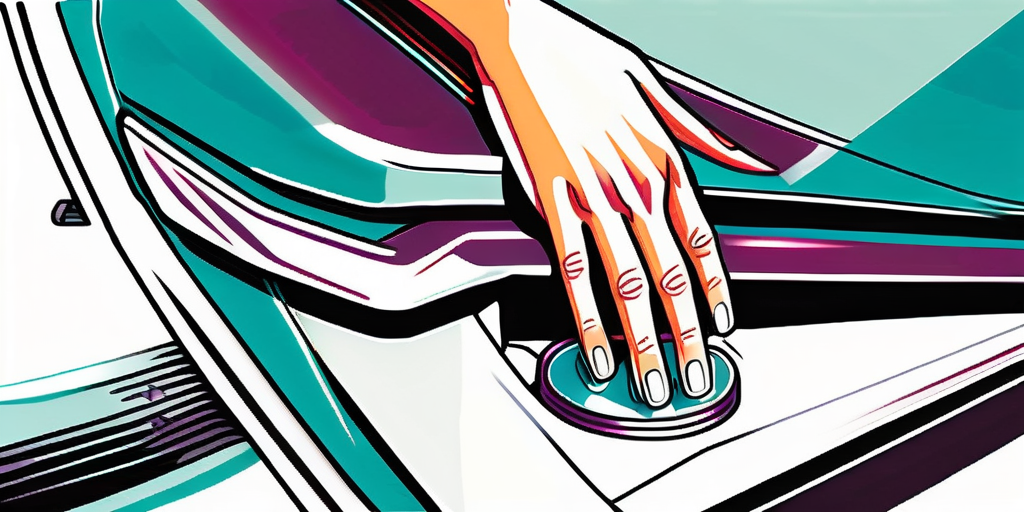How to wax a Jeep Wrangler?
The Jeep Wrangler, a classic symbol of off-road adventure, is a vehicle that deserves the utmost care and attention. Waxing your Jeep Wrangler not only enhances its aesthetic appeal but also provides a protective layer against harsh environmental conditions. The process of waxing may seem daunting, but with the right guidance, anyone can achieve a professional finish. So, let's dive into the comprehensive guide on how to wax a Jeep Wrangler.
Understanding the Importance of Waxing
Before we delve into the process, it's essential to understand why waxing your Jeep Wrangler is crucial. Waxing is not merely a cosmetic procedure; it's a protective measure that can extend the life of your vehicle's paintwork.

Firstly, waxing provides a barrier against harmful elements such as UV rays, road salt, and dirt. These elements can cause your paint to fade, chip, or even rust over time. A good waxing routine can help to prevent these issues, keeping your Jeep Wrangler looking fresh and new.
Secondly, waxing enhances the aesthetic appeal of your Jeep. A well-waxed vehicle has a glossy, smooth finish that is pleasing to the eye. It can even improve the resale value of your vehicle, as it shows potential buyers that you've taken good care of your Jeep.
Choosing the Right Wax
Now that we understand why waxing is essential, the next step is choosing the right wax for your Jeep Wrangler. There are three main types of wax: liquid, paste, and spray. Each has its own set of pros and cons.
Liquid Wax
Liquid wax is popular due to its ease of application and durability. It's easy to spread, providing a thin, even layer of wax on your vehicle. However, it can be tricky to remove if left to dry for too long.
Paste Wax
Paste wax, on the other hand, requires a bit more effort to apply but often provides a deeper shine than liquid wax. It's great for older vehicles with faded paintwork, as it can help to restore the paint's original lustre.
Spray Wax
Spray wax is the quickest and easiest to apply, making it a great option for those short on time. However, it's not as durable as liquid or paste wax and may need to be reapplied more frequently.
The Waxing Process
Now that we've chosen our wax, it's time to get down to the actual process of waxing our Jeep Wrangler. Here's a step-by-step guide to help you through it.
Start by washing your Jeep thoroughly. This removes any dirt or grime that could scratch your paintwork during the waxing process. Use a high-quality car wash soap and a soft sponge or mitt to clean your vehicle.
Once your Jeep is clean, it's time to apply the wax. If you're using liquid or paste wax, apply a small amount to a soft, clean cloth or applicator pad. Spread the wax onto your vehicle in a thin, even layer. If you're using spray wax, simply spray it onto your vehicle and spread it with a clean cloth.
After applying the wax, let it dry until it forms a hazy finish. This usually takes about 5-10 minutes, but it can vary depending on the type of wax you're using.
Once the wax is dry, use a clean, soft cloth to buff it off. Use circular motions and apply light pressure to remove the wax and reveal a shiny, glossy finish.
And there you have it! A beautifully waxed Jeep Wrangler that's ready to tackle any adventure. Remember, regular waxing is key to maintaining your vehicle's appearance and protecting its paintwork. So, make it a part of your regular vehicle maintenance routine.
Common Mistakes to Avoid
While waxing your Jeep Wrangler is a relatively straightforward process, there are a few common mistakes that can hinder your results. Let's take a look at these and how to avoid them.
Not Preparing the Surface Properly
One of the most common mistakes people make when waxing their vehicle is not properly preparing the surface. This includes not washing the vehicle thoroughly before waxing and not drying it properly. Any dirt or water left on the surface can interfere with the wax's ability to bond with the paint, resulting in a less-than-perfect finish.
Applying Too Much Wax
Another common mistake is applying too much wax. While it may seem like more wax would provide more protection, this is not the case. Applying too much wax can make it difficult to remove and can result in a cloudy, uneven finish. Remember, a little goes a long way when it comes to waxing your vehicle.
Not Allowing the Wax to Dry Fully
Finally, not allowing the wax to dry fully before buffing it off can result in streaks and smears. Always wait until the wax has dried to a hazy finish before buffing it off. This ensures that the wax has had time to bond with the paint and will provide the best possible protection and shine.
Conclusion
Waxing your Jeep Wrangler is a crucial part of vehicle maintenance that can protect your paintwork and enhance your vehicle's aesthetic appeal. By choosing the right wax, following the proper waxing process, and avoiding common mistakes, you can achieve a professional, glossy finish that will make your Jeep stand out on the road and the trail.
Remember, waxing is not a one-time task. It's a routine that should be carried out regularly to maintain your Jeep's appearance and protect its paintwork. So, grab your wax, roll up your sleeves, and give your Jeep the care it deserves.
Ready to give your Jeep Wrangler the ultimate shine and protection? Look no further than AvalonKing for all your car care needs. With years of experience in providing top-quality cleaning products, AvalonKing is your go-to source for everything from ceramic coatings to car shampoos. Check out our products today and see the difference for yourself!












